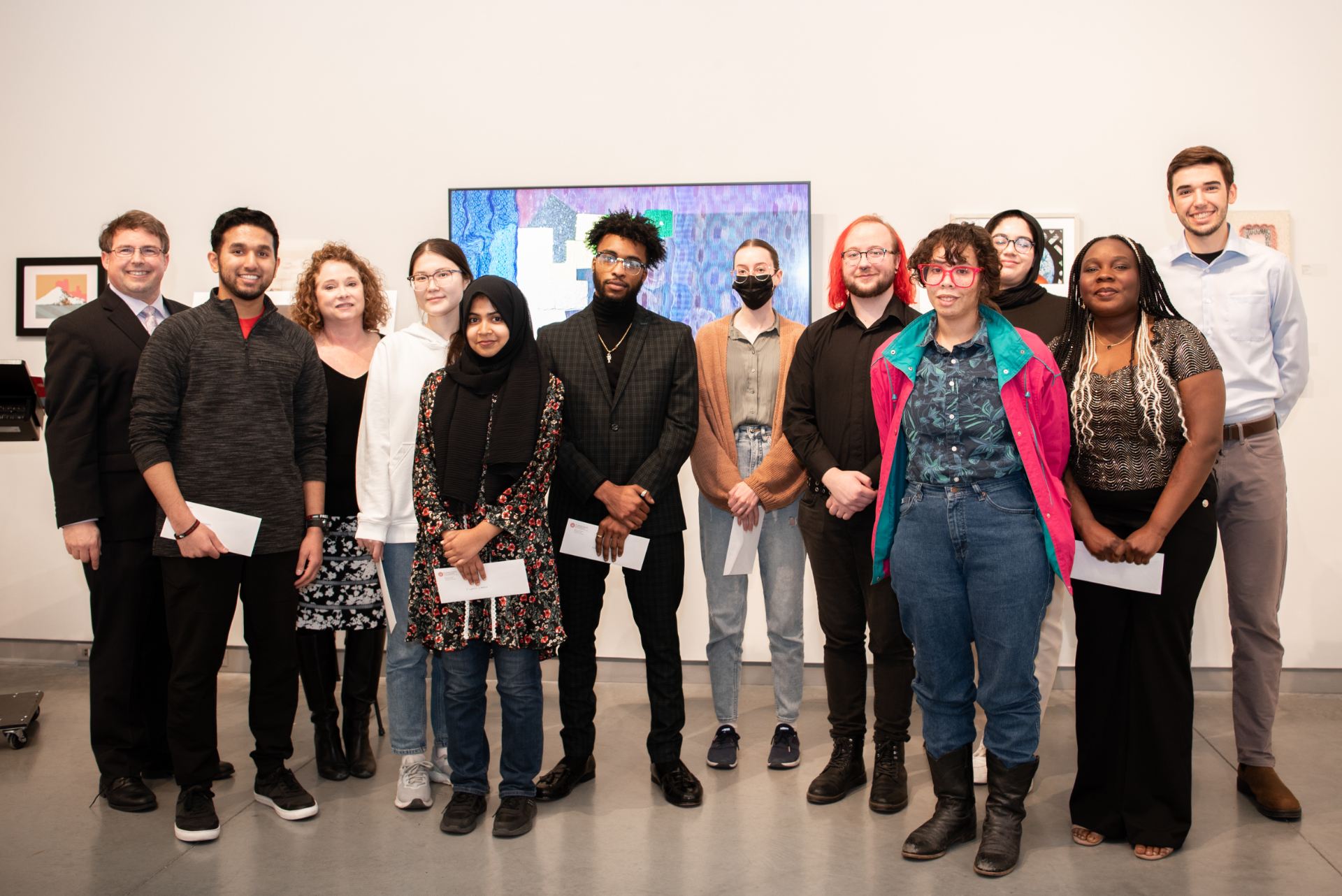
The gray line that separates the arts and sciences disappeared February 8 at University Galleries as students from across campus exhibited their entries into the fifth annual Image of Research competition.
“What I really like about this event is the variety of disciplines that are featured,” said Dr. Robyn Seglem, acting director of the Officer of Student Research and a professor of middle level literacy and teaching. “It gives an opportunity for students in the hard sciences to show their artistic side, but it also gives an opportunity for the students in the more soft sciences to show what they do and then the punch behind the research.”
University Galleries hosted the Office of Student Research’s reception and awards presentation highlighting the submissions from the 21 finalists (14 graduate and seven undergraduate students). Event sponsors also included the Office of Research and Graduate Studies and Milner Library, and the finalists represented academic areas within the College of Arts and Sciences, College of Education, and Wonsook Kim College of Fine Arts.
“We categorize things in majors and colleges, and that’s helpful, but there really is science in art and art in science.”
Lauren Leischner
Students proudly displayed their images and explained their connection to the research as approximately 50 attendees viewed the entries and could access a QR code linking to a description of each work.
“That ability to communicate the work we do to the outside world is just becoming more and more important as scholars,” Dr. Craig C. McLauchlan, associate vice president for Research and Graduate Studies and a professor of chemistry, told the audience. “So this type of work reaches a much broader audience than if we only put it in our traditional academic outlets.
“I definitely want to give a shoutout to all those mentors that helped the students get here and introduce them to our disciplinary worlds. This is a really cool avenue to try and do that.”
Last fall, the student researchers submitted a single, static image that conveyed their research or creative scholarship and described its connection to their work in a 150-word abstract. The entries were evaluated based on visual impact, uniqueness, and the connection between image and narrative by two judges—Ian Crawley, a local artist, and Jane Camp, a local artist and professor of art at Heartland Community College. Attendees voted on the day of the exhibit for the People’s Choice awards. All of the winners received cash prizes.
“I’m always blown away by what the students are doing, whether it’s the image or the statement they’re writing,” said Kendra Paitz, director and chief curator of University Galleries. “It’s especially thrilling to see them here in the space and to see them interacting with their families and their faculty members. This is a really good experience for students to not just think about their written statement that they crafted, but speaking about the works and answering, perhaps, unexpected questions.”
University Galleries displayed the finalists’ entries throughout the day. The award-winning images will be exhibited at Milner Library, for the Board of Trustees, and at the 2024 University Research Symposium. View all of the finalists’ images online through Milner Library’s ISU ReD digital repository.
Graduate winners
First place ($200)
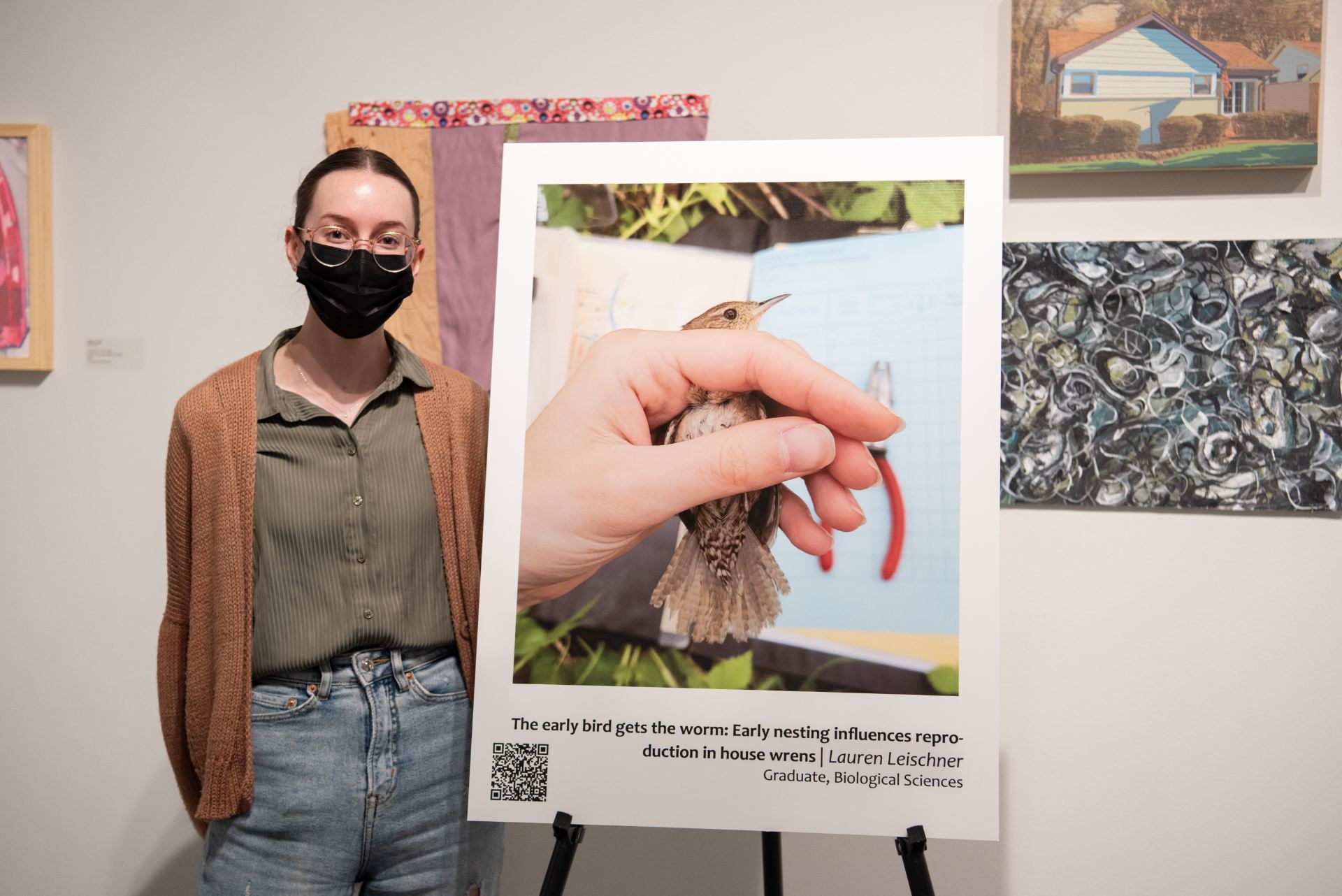
Second place ($150)
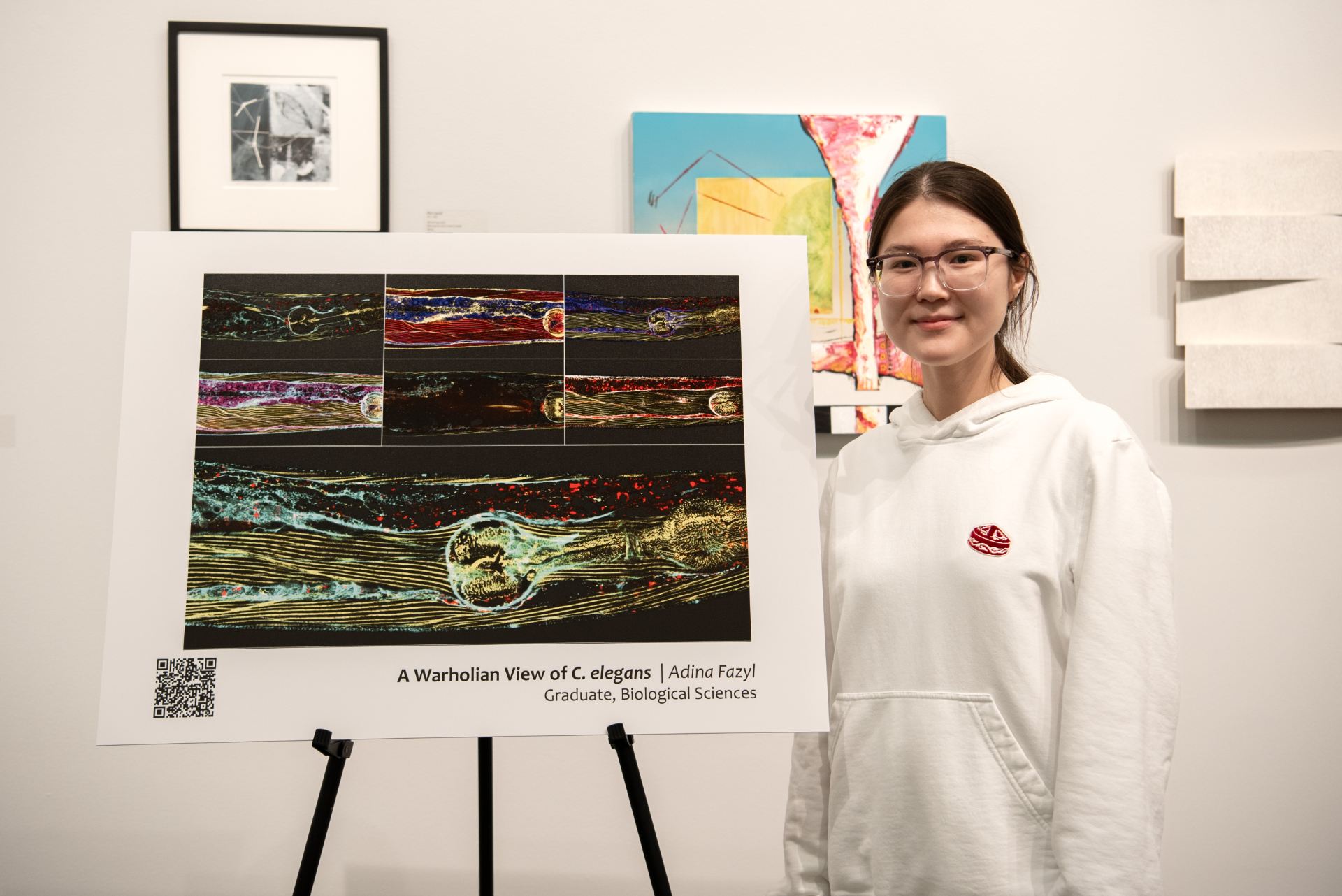
Honorable mention ($50 each)

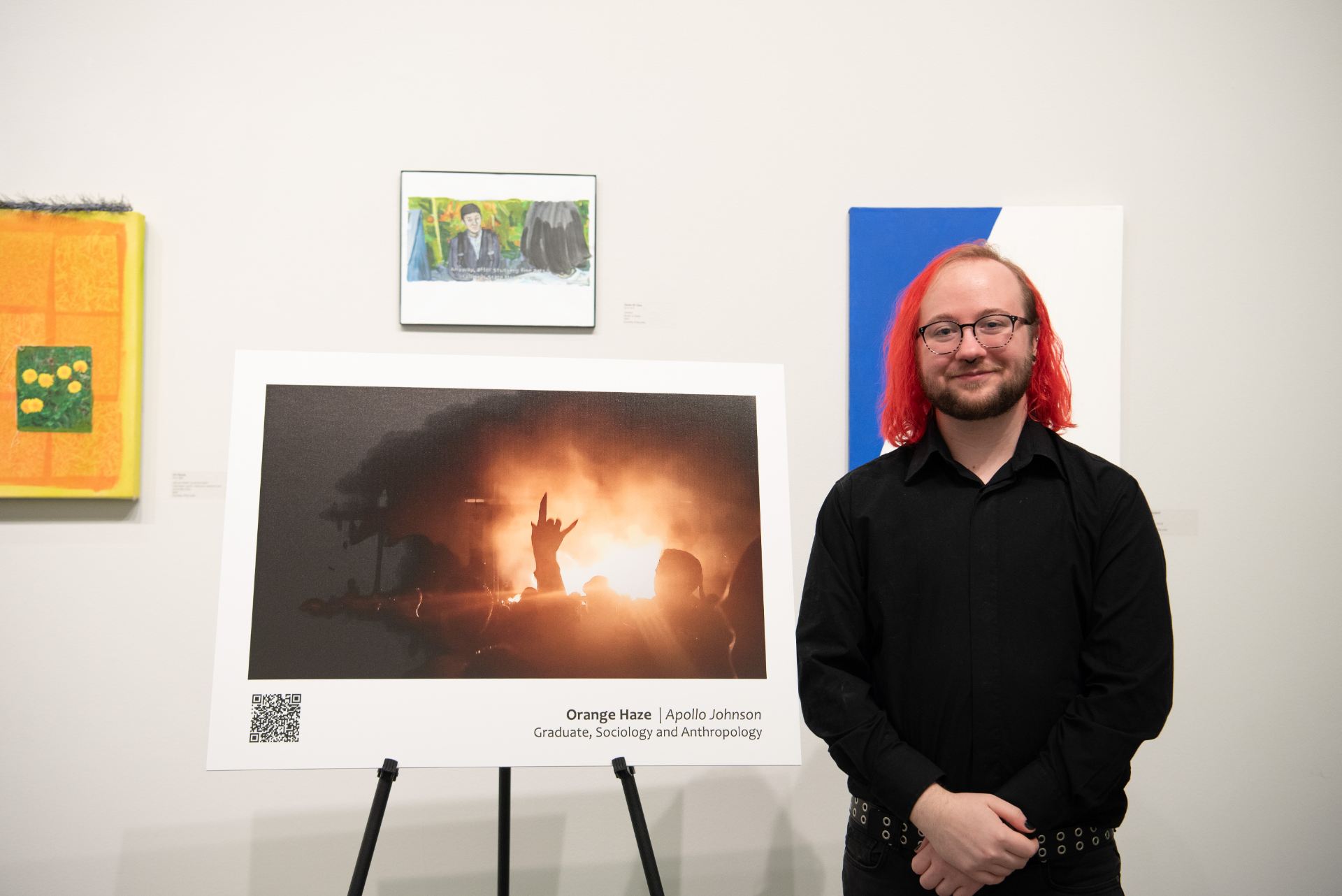
People’s Choice ($100)
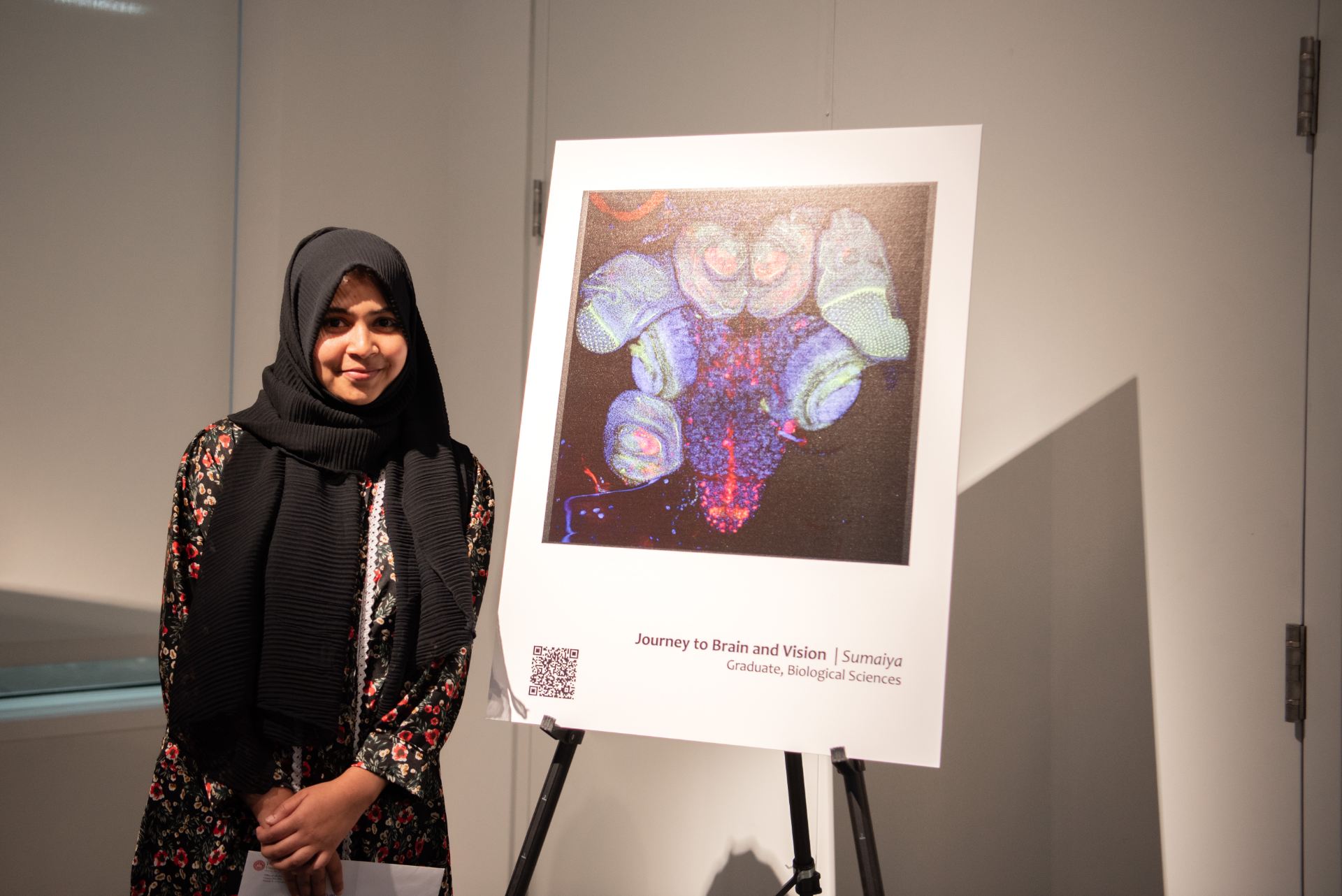
Undergraduate winners
First place ($200)
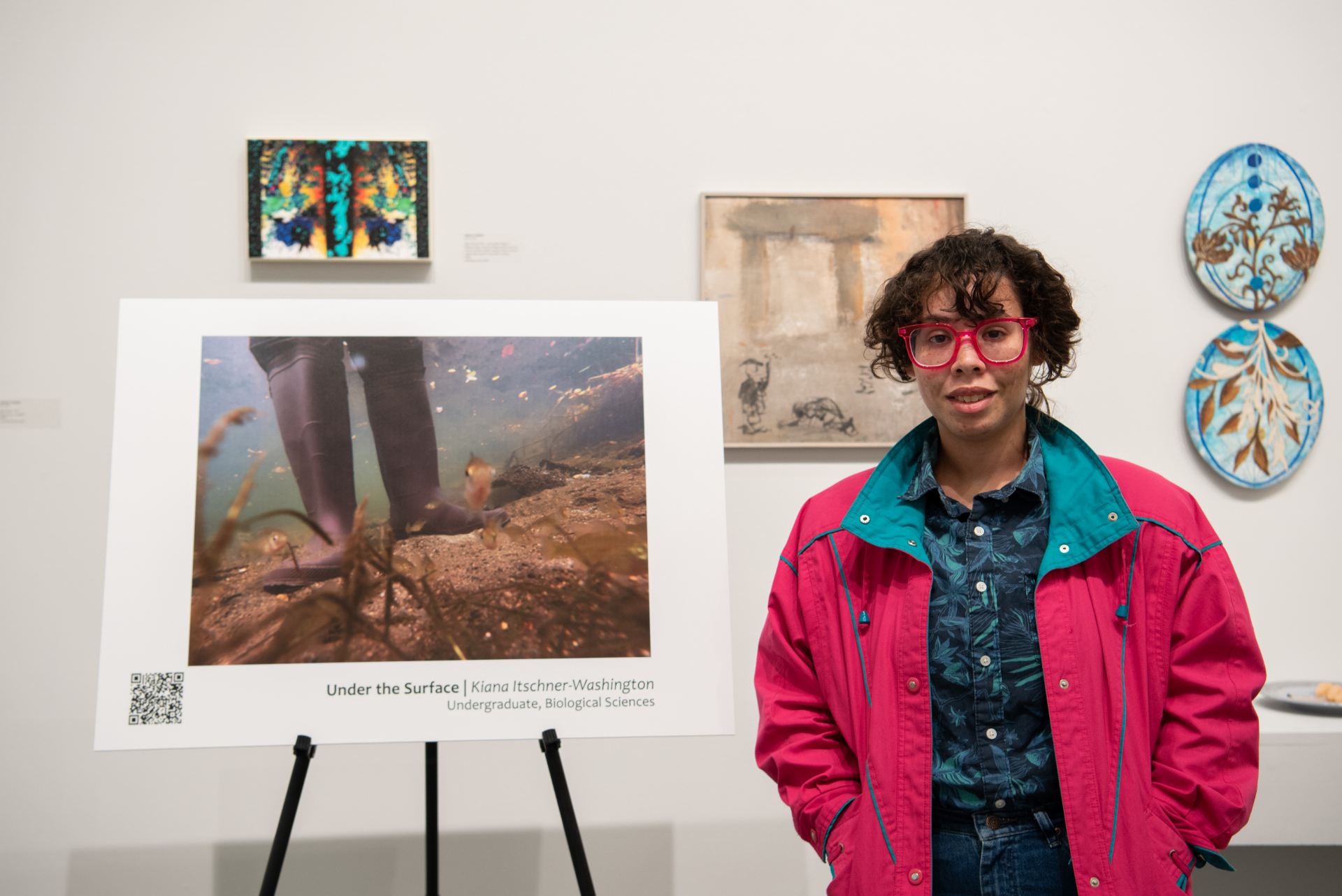
Second place ($150)
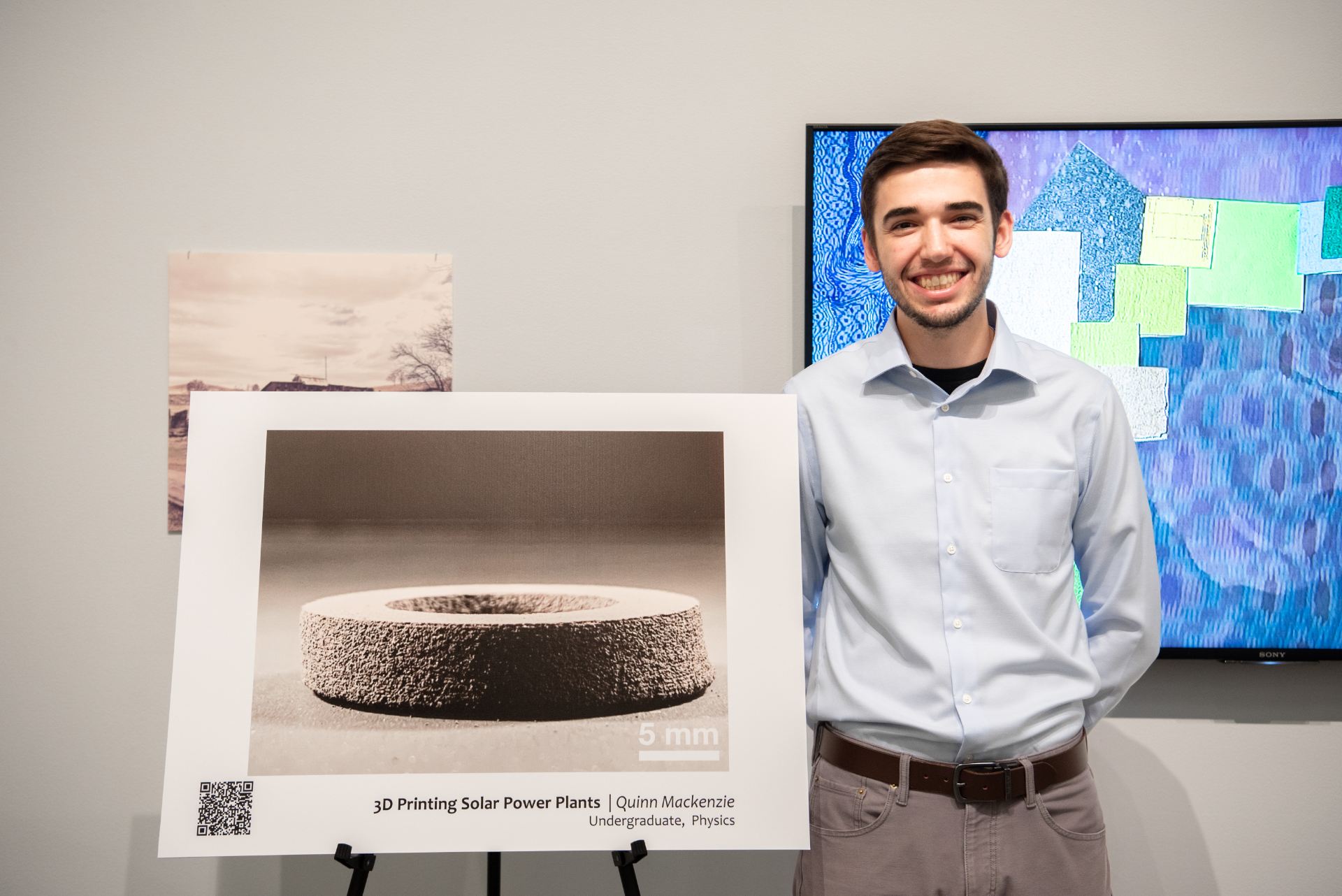
Honorable mention ($50 each)
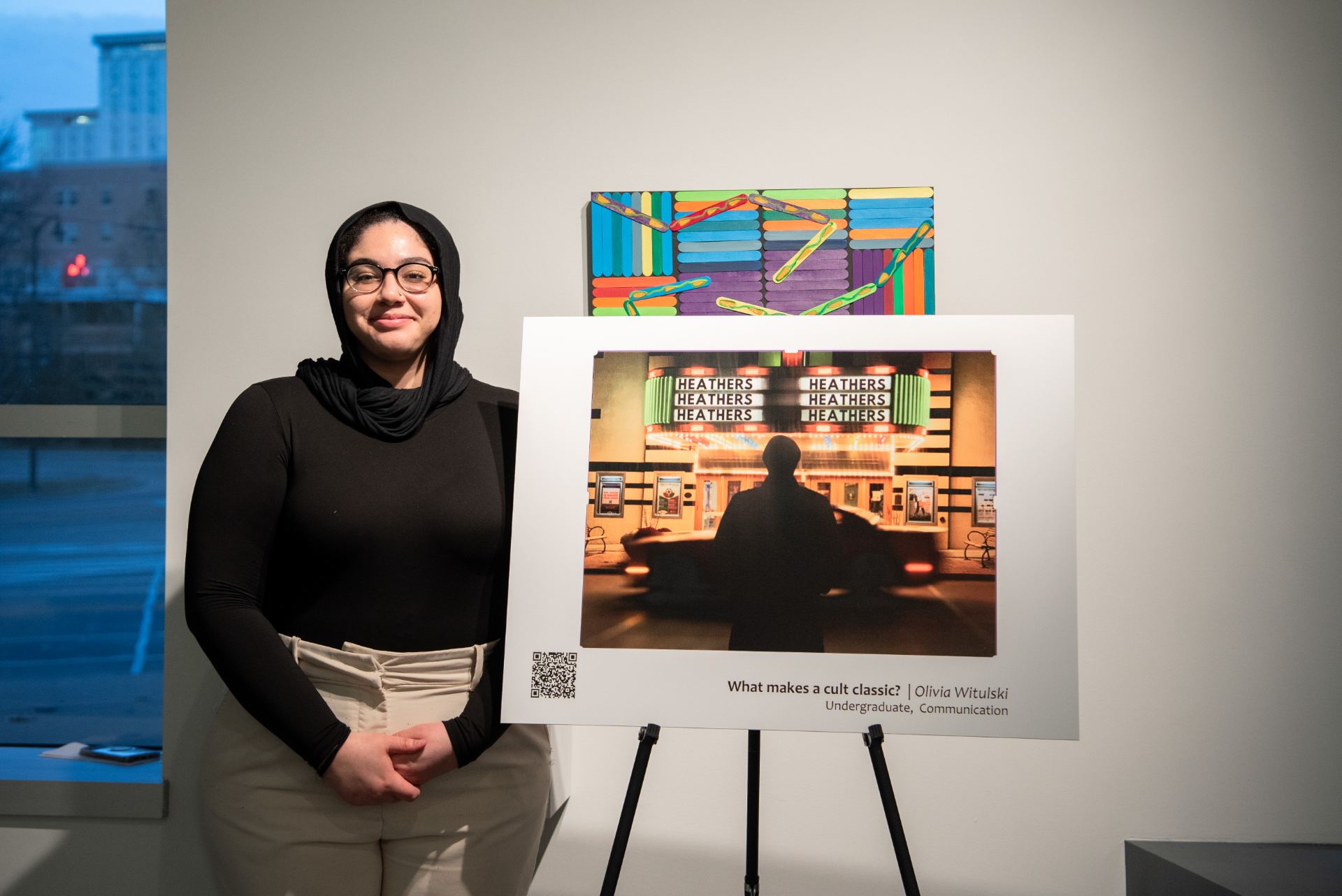
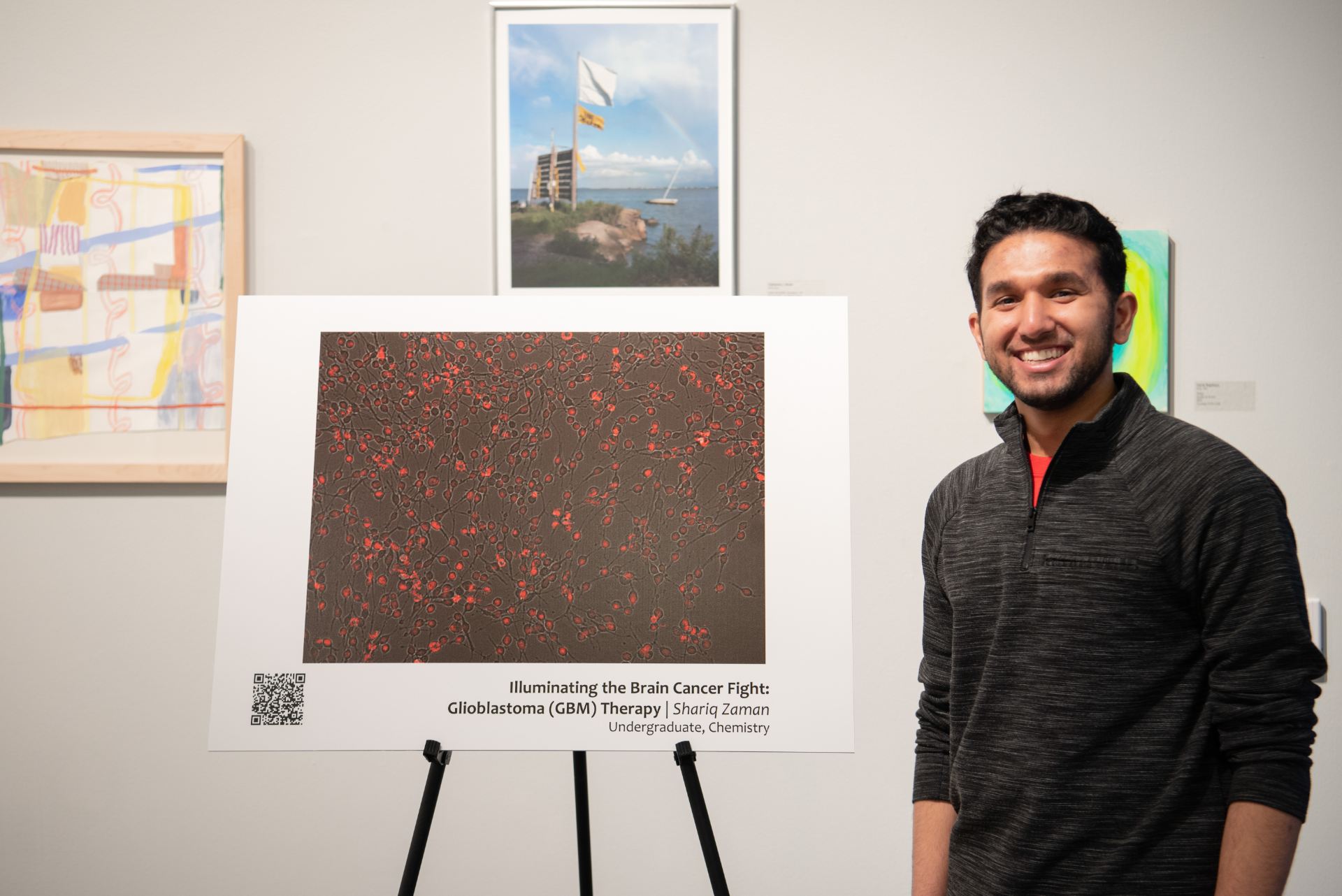
People’s Choice ($100)
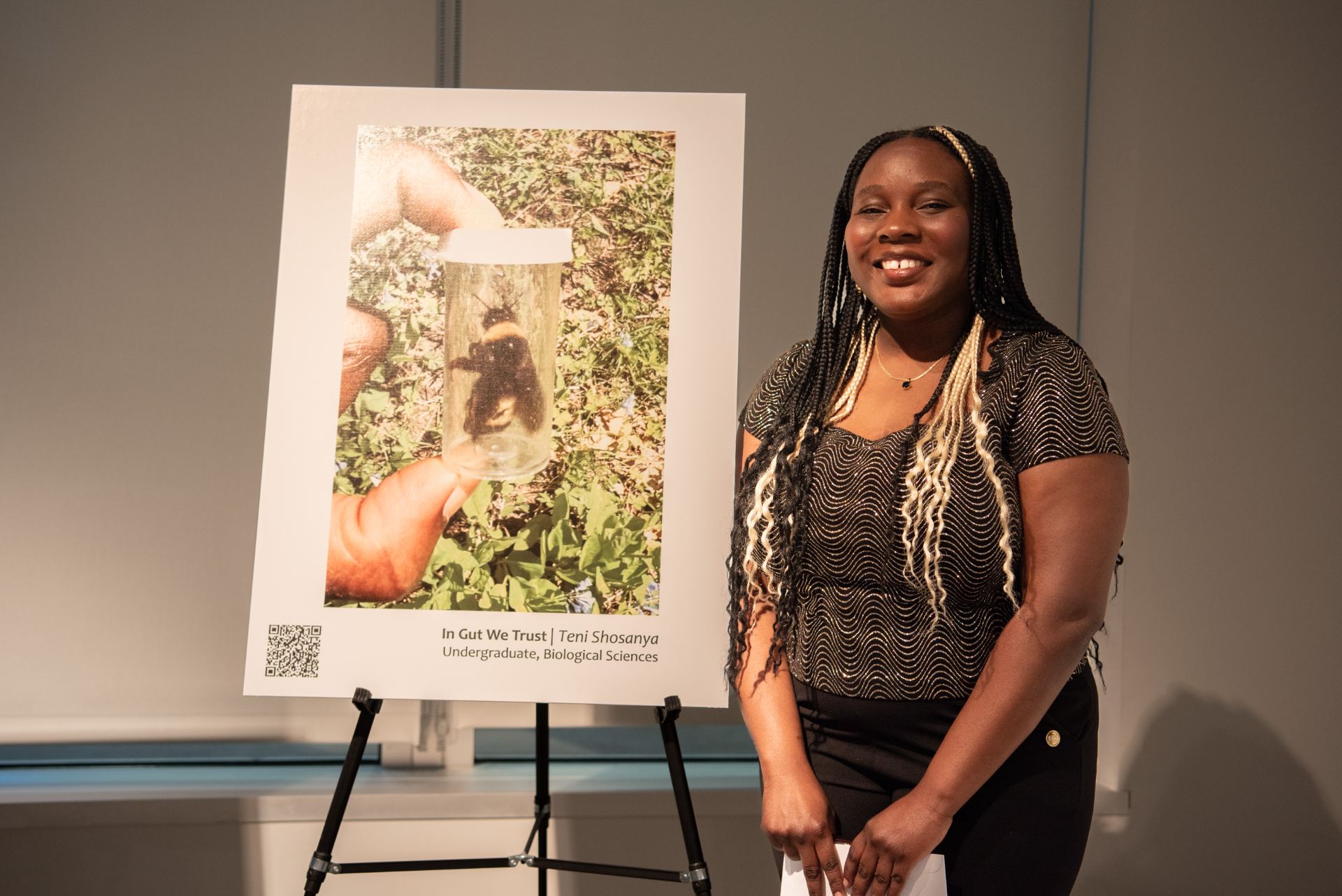
Blending art and science
The first-place winners both came out of the School of Biological Sciences and share a background in the arts. In fact, Leischner, now a master’s student, said she began her undergraduate career as an art major before switching to biology.
“We categorize things in majors and colleges and that’s helpful, but there really is science in art and art in science. There’s a lot of overlap, as you see in this kind of event.
Leischner’s photograph showed her holding a female wren last summer. She had captured the bird to measure it as part of the school’s long-term field study at the Merwin Preserve.
Itschner-Washington, who graduated last semester, researched the sounds fish make underwater. The entry came out of a study examining, in part, what fish species were in a local creek through matching the sound imaging with the audio. “It is a joy to participate in this. It’s very fun, and I got to show off some of the photography that I’ve been doing for the past couple of semesters, so I’m glad I got to participate.”
Leischner said the competition presented a good opportunity to write about her research for a general audience. “It’s a helpful exercise to explain things simply and also present your research to people outside the community as well.”
